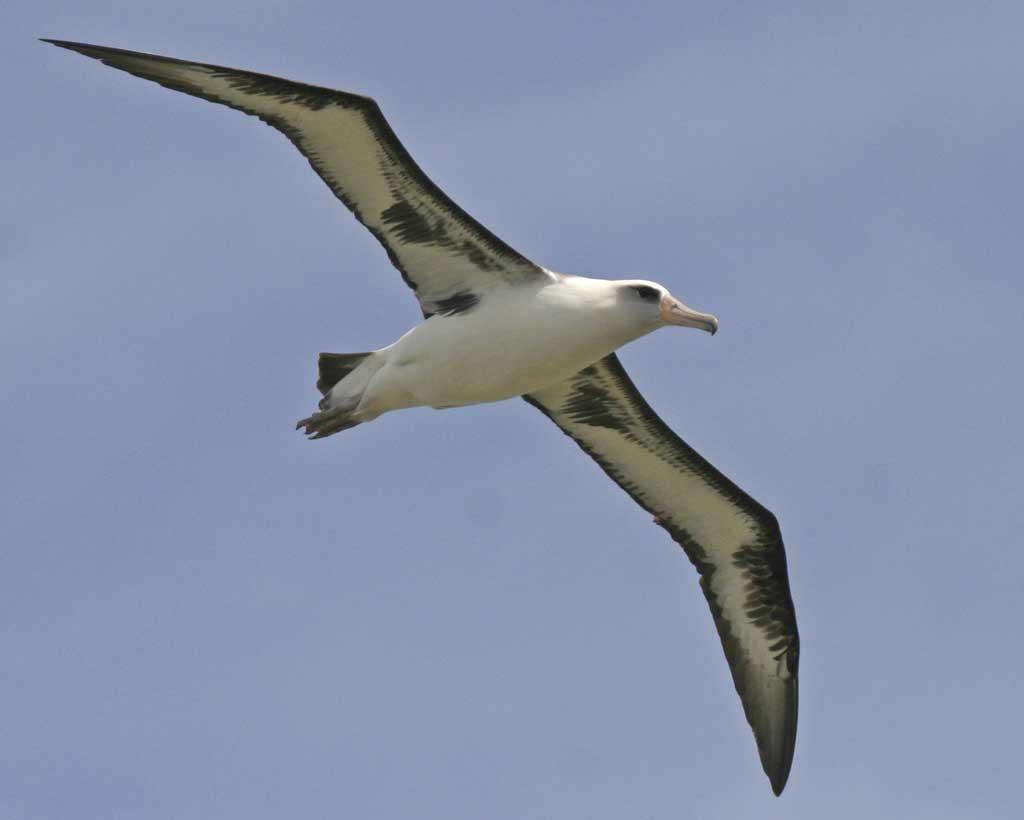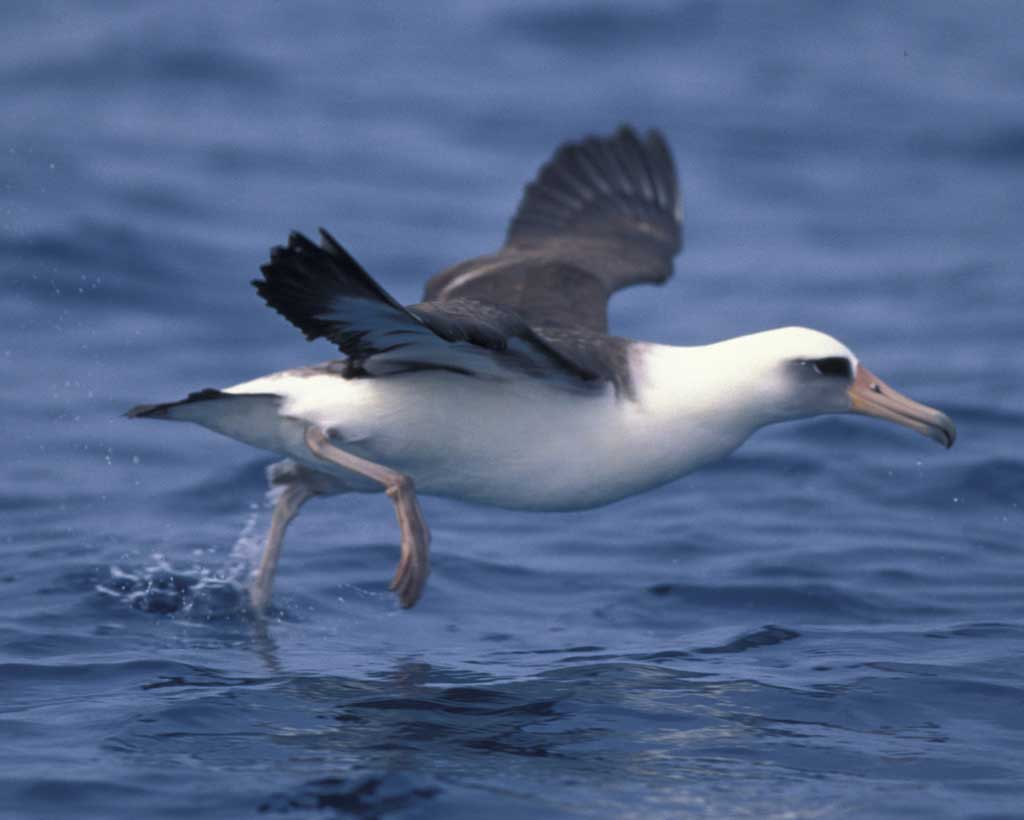
Laysan Albatross – The Heavy Hawaiian Seabird
Large, heavy seabirds, the Laysan Albatross can fly great distances with short wing strokes and a long period of graceful soaring. They glide on the winds and can rise for miles with the slightest change in the wing position. Ashore, they will plod along before running into the wind to take off.
Nearly three feet wide with a wingspan of 6.4-6.7 feet, the Laysan Albatross has a white head, neck, and underbody. They have gray, pink, or yellow beaks with a dark tip to accompany a dark eye patch. Sporting dark brown upper wings and backs, and brown and white under their wings, they stand on gray or pink-tinged legs and feet.
Habitat
The seabirds can be found parts of the northern Pacific Ocean, from Costa Rica to the southern Bering Sea, including Midway Atoll and Papahanaumokuakea Marine National Monument.
Diet & Foraging Strategies
Laysan Albatross feed on squid and fish eggs, carrion, and crustaceans and sometimes follow ships to scavenge food waste. When feeding, they float on the water’s surface and fish with their beaks to grab prey. Much of the feeding comes at night as they have a strong night vision.
Adult Laysan Albatross with chicks are known to take long foraging trips for food to feed the little ones. Trips can cover more than 1,600 miles and last up to 17 days away from the nest.
Mating Rituals
The seabirds return to the colony starting in November and perform elaborate mating rituals. Prospective mates will display coordinated movement, bob their heads, or pause with their bills pointed skyward. These movements will culminate in a touching of the bills. The pairs will likely form long-lasting, monogamous bonds.
After mating, both birds will leave the habitat. The female will return to lay the egg, nesting to keep it safe from cats, rats, mongoose, and adults birds.
Reproduction
Papahanaumokuakea Marine National Monument is the largest marine protected area in the Northern Hemisphere. Home to over 7,000 species, it is home base for more than 90% of Laysan Albatross breeding pairs and where 99% of the breeding activity will occur.
They nest on grassy or sandy parts of the islands that are open expanses, but close to little vegetation.
In sandy areas, the female Albatross will use its feet to burrow. Once a hollow has been created, she will twist in circles to create a depression for the nest before gathering twigs and leaves to fortify the nest. On Hawaii’s larger islands, the females will build their nest on the grass in a similar manner but use leaves, tree needles, and twigs to form the rim.
When complete, the nest can measure three feet in diameter and a few inches deep.
Nesting
Females give birth to one egg in 1 brood, which is white with brown spotted. After an incubation period of 62-66 days, the chick weighing about 7 ounces will emerge covered in a gray and white down covering.
After birth, chicks spend a long time in the nestling period, lasting up to 165 days. After leaving the nest, they will leave the colony and may not return for years. You will see three and four-year-old Laysan Albatross return to the colony and attempt to breed, but they are usually not successful until age 9 or 10.

Migration Patterns
The seabirds will leave the Hawaiian breeding grounds by July and typically head north towards Japan or the Aleutian islands, making the round trip back towards Hawaii. Non-breeding Laysan Albatross wander the North Pacific year-round. They are numerous off the coast of Alaska in the summer and California in the winter.
Some strays are found inland in the Southwest United States as they attempt to move north over land.
Population
While large in numbers, there are threats to the population. Recent estimates report 600,000 breeding pairs, but the species is on the 2016 State of North America’s Birds’ Watch List which lists species that are most at risk of extinction without conservation efforts.
Laysan Albatross nest on low-lying tropical areas. Breeding areas are threatened by potential rising sea levels. In addition to other animal predators, they are susceptible to lead poisoning from paint chips, ingesting plastic debris, and verbesina, an invasive plant that covers their nests. Because the seabirds don’t typically breed until 9 or 10 years of age, and only give birth to one egg a year, an increase in mortality can severely impact the population.
Conservation
We can make small changes that benefit Albatross and other species, such as reducing the use of single-use plastics and choosing sustainable/responsibly sourced seafood.
